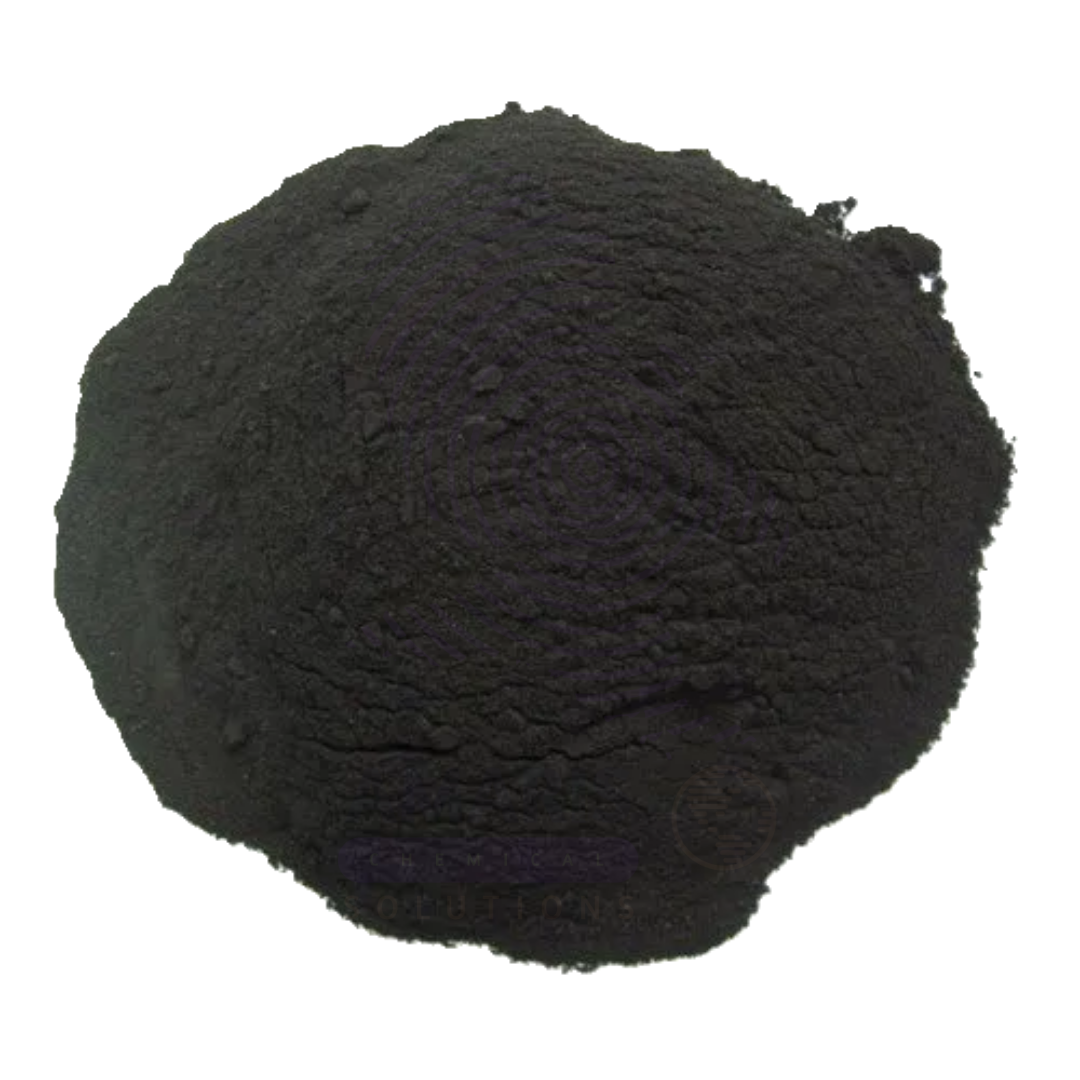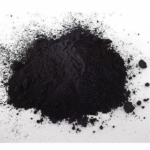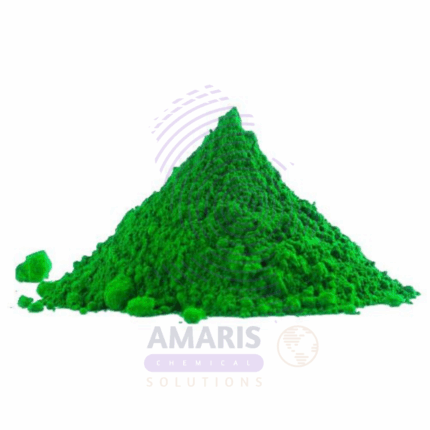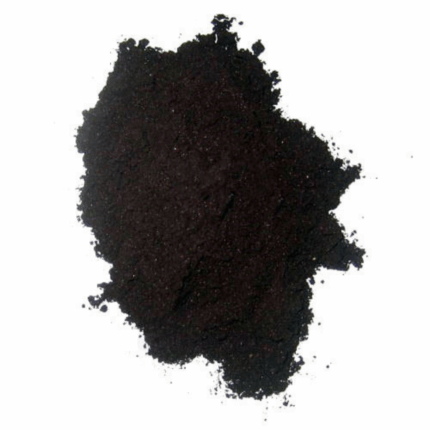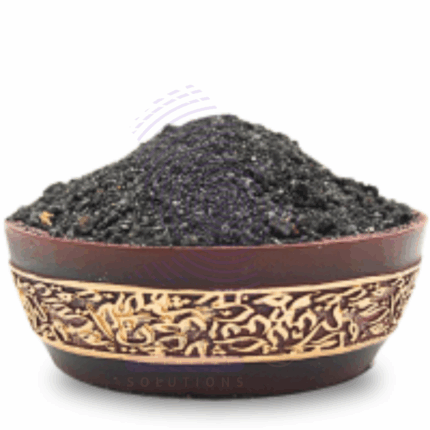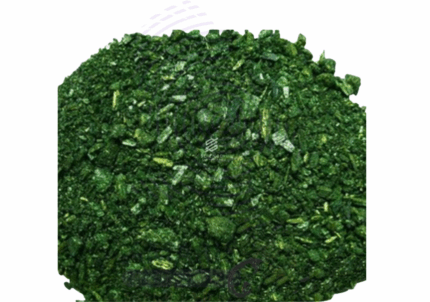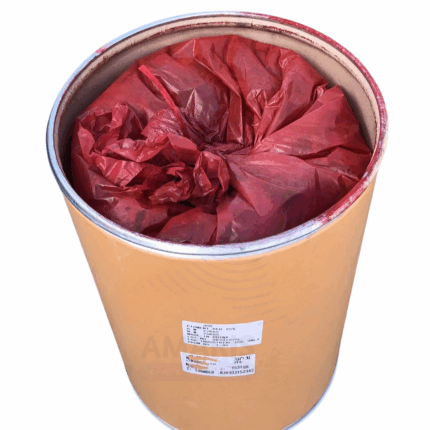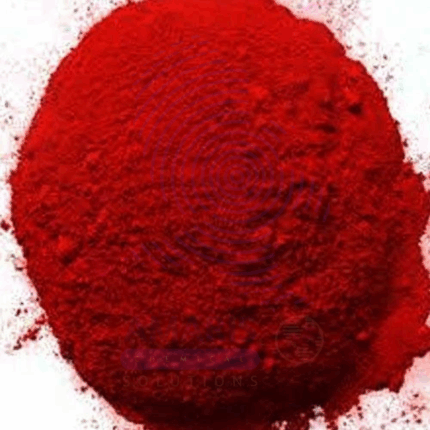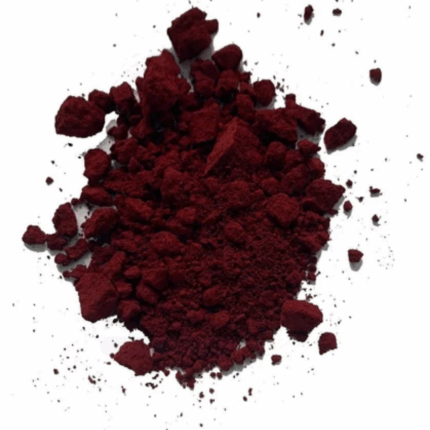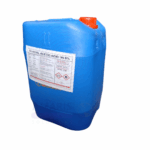
Acid Black 2 Powder
Acid Black 2 Powder is a synthetic anionic disazo dye belonging to the acid dye class, specifically formulated for intense black coloration with excellent light and wash fastness properties. This high-purity powder (100% active) exhibits superior solubility in aqueous solutions, making it particularly suitable for dyeing protein-based fibers like wool, silk, and nylon under acidic conditions. As a chromium-complex dye, it delivers enhanced color depth and improved fastness characteristics compared to non-metalized acid dyes. The powder form ensures precise dosing, consistent batch-to-batch reproducibility, and long-term stability when stored properly. Its molecular structure features sulfonic acid groups that facilitate strong ionic bonding with amino groups in fibers, resulting in vibrant, penetration-rich coloration with minimal bleeding.
1. Basic Identification Attributes
- Chemical Name (IUPAC):
Disodium 4-amino-5-hydroxy-3-[(4-nitrophenyl)azo]-6-(phenylazo)naphthalene-2,7-disulfonate - Common/Trade Names:
- Acid Black 2
- C.I. 50420
- Naphthalene Black 12B
- Eriochrome Black T (similar but distinct)
- CAS Number: [8005-03-6]
- HS Code: 3204.12.00 (acid dyes)
- Molecular Formula: C₂₂H₁₄N₆Na₂O₉S₂
- Molecular Weight: 616.5 g/mol
- Synonyms:
- Acid Black BN
- Lissamine Black 12B
- Wool Black 6BN
2. Physical & Chemical Properties
- Physical State: Fine powder
- Color: Dark bluish-black
- Odor: Odorless
- Melting Point: Decomposes before melting (~300°C)
- Boiling Point: Not applicable (decomposes)
- Density: ~1.5 g/cm³ (bulk density)
- Solubility:
- Water: 50 g/L (20°C)
- Ethanol: Slightly soluble
- Organic solvents: Insoluble
- pH Level: 5-7 (1% solution)
- Vapor Pressure: Negligible
- Flash Point: >200°C (non-flammable)
- Optical Properties: λmax = 570-620 nm (varies with pH)
3. Safety & Hazard Attributes
- Hazard Class (GHS):
- Acute Toxicity (Oral): Category 4 (H302)
- Skin Irritation: Category 2 (H315)
- Eye Irritation: Category 2A (H319)
- NFPA Ratings:
- Health: 2
- Flammability: 1
- Reactivity: 0
- Exposure Limits:
- OSHA PEL: Not established
- ACGIH TLV: Not established
- Reactivity:
- Stable under normal conditions
- Incompatible with strong oxidizers
4. Storage & Handling Attributes
- Storage Conditions:
- Cool, dry place (<30°C)
- Relative humidity <60%
- Away from direct sunlight
- Incompatible Materials:
- Strong oxidizers (peroxides, chlorates)
- Strong acids/bases
- Container Type:
- Sealed polyethylene or polypropylene containers
- Avoid metal containers
- Shelf Life: 24 months minimum
- Special Handling:
- Dust mask (NIOSH N95)
- Chemical-resistant gloves (nitrile)
- Eye protection (goggles)
5. Regulatory & Compliance Attributes
- Regulatory Status:
- EU: Compliant with REACH Annex XVII
- US: EPA TSCA listed
- China: IECSC listed
- Hazard Symbols (GHS):
- Exclamation mark (irritant)
- Not classified as carcinogenic
- Transportation Restrictions:
- Not regulated as dangerous goods
- Proper shipping name: "DYES, SOLID, N.O.S."
- Waste Disposal:
- Incineration at approved facilities
- Not RCRA hazardous (US)
6. Environmental & Health Impact
- Ecotoxicity:
- LC50 (fish): >100 mg/L (96h)
- EC50 (daphnia): >10 mg/L (48h)
- Persistence:
- Moderately biodegradable
- BOD5/COD: 0.1-0.3
- Carcinogenicity:
- IARC: Not classified
- NTP: Not listed
- Biodegradability:
- 30-60% in 28 days (OECD 301B)
Acid Black 2 Powder
Primary Uses
- Textile Dyeing
- Wool & Silk: Acid Black 2 is extensively used for dyeing protein-based fibers like wool, silk, and cashmere due to its strong affinity for these materials.
- Nylon & Synthetic Fibers: Also effective on polyamide (nylon) fabrics, providing deep, wash-fast black shades.
- Leather Industry: Used in leather dyeing for shoes, bags, and upholstery.
- Ink & Printing Industry
- Used in inks for ballpoint pens, stamp pads, and inkjet printing.
- Provides permanent, fade-resistant black coloration in specialty inks.
- Biological & Laboratory Staining
- Sometimes used in microscopy for staining biological specimens.
- Helps in histology for tissue contrast enhancement.
Secondary Uses
- Paper & Packaging Industry
- Used in colored paper production and security printing (e.g., banknotes, certificates).
- Cosmetics (Limited Use)
- Found in temporary hair dyes and cosmetic pigments (regulated for safety).
- Art & Craft Supplies
- Used in fabric paints, markers, and artist’s dyes for textiles.
- Wood Staining
- Occasionally applied in furniture and woodworking for dark finishes.
1. Safety Precautions
Personal Protective Equipment (PPE):
- Gloves: Nitrile or neoprene gloves
- Eye Protection: Chemical splash goggles
- Respiratory Protection: NIOSH-approved N95 mask or higher (for dust)
- Clothing: Lab coat or protective apron
Handling & Storage:
- Handle in a well-ventilated area or under a fume hood
- Avoid creating dust (use wet methods if possible)
- Keep away from oxidizers, strong acids, and bases
- Store in a cool, dry place in a tightly sealed container
- Label containers clearly
Hygiene Practices:
- Do not eat, drink, or smoke while handling
- Wash hands thoroughly after use
- Avoid inhalation of dust
2. First Aid Measures
Inhalation (Dust):
- Move to fresh air immediately
- If breathing is difficult, seek medical attention
Skin Contact:
- Remove contaminated clothing
- Wash affected area with soap and water for at least 15 minutes
- Seek medical attention if irritation persists
Eye Contact:
- Rinse eyes with plenty of water for at least 15 minutes (hold eyelids open)
- Seek immediate medical attention
Ingestion:
- Do NOT induce vomiting
- Rinse mouth with water
- Drink water to dilute
- Seek emergency medical help
3. Firefighting Measures
Fire Hazards:
- Not highly flammable, but may decompose at high temperatures
- May emit toxic fumes (NOx, CO, CO₂) when burning
Extinguishing Media:
- Water spray
- Dry chemical powder
- CO₂
- Foam
Firefighting Precautions:
- Wear self-contained breathing apparatus (SCBA)
- Cool containers exposed to fire with water spray
- Avoid breathing smoke/fumes
4. Spill & Disposal
Small Spills:
- Wear PPE
- Dampen with water to reduce dust
- Sweep up and place in a sealed container
Large Spills:
- Evacuate area
- Contain spill to prevent spread
- Collect for proper disposal
Disposal:
- Treat as hazardous waste
- Follow local regulations for dye disposal


 Preservatives(food)
Preservatives(food) Flavor Enhancers
Flavor Enhancers Acidulants
Acidulants Sweeteners
Sweeteners Antioxidants
Antioxidants Colorants(food)
Colorants(food) Nutraceutical Ingredients (food)
Nutraceutical Ingredients (food) Nutrient Supplements
Nutrient Supplements Emulsifiers
Emulsifiers
 Collectors
Collectors Dust Suppressants
Dust Suppressants Explosives and Blasting Agents
Explosives and Blasting Agents Flocculants and Coagulants
Flocculants and Coagulants Frothers
Frothers Leaching Agents
Leaching Agents pH Modifiers
pH Modifiers Precious Metal Extraction Agents
Precious Metal Extraction Agents
 Antioxidants(plastic)
Antioxidants(plastic) Colorants (Pigments, Dyes)
Colorants (Pigments, Dyes) Fillers and Reinforcements
Fillers and Reinforcements Flame Retardants
Flame Retardants Monomers
Monomers Plasticizers
Plasticizers Polymerization Initiators
Polymerization Initiators Stabilizers (UV, Heat)
Stabilizers (UV, Heat)
 Antifoaming Agents
Antifoaming Agents Chelating Agents
Chelating Agents Coagulants and Flocculants
Coagulants and Flocculants Corrosion Inhibitors
Corrosion Inhibitors Disinfectants and Biocides
Disinfectants and Biocides Oxidizing Agents
Oxidizing Agents pH Adjusters
pH Adjusters Scale Inhibitors( water)
Scale Inhibitors( water)
 Antioxidants(cosmetic)
Antioxidants(cosmetic) Emollients
Emollients Fragrances and Essential Oils
Fragrances and Essential Oils Humectants
Humectants Preservatives
Preservatives Surfactants(cosmetic)
Surfactants(cosmetic) Thickeners
Thickeners UV Filters
UV Filters
 Fertilizers
Fertilizers Soil Conditioners
Soil Conditioners Plant Growth Regulators
Plant Growth Regulators Animal Feed Additives
Animal Feed Additives Biostimulants
Biostimulants Pesticides (Herbicides, Insecticides, Fungicides)
Pesticides (Herbicides, Insecticides, Fungicides)
 Active Pharmaceutical Ingredients (APIs)
Active Pharmaceutical Ingredients (APIs) Excipients
Excipients Solvents(pharmaceutical)
Solvents(pharmaceutical) Antibiotics
Antibiotics Antiseptics and Disinfectants
Antiseptics and Disinfectants Vaccine Adjuvants
Vaccine Adjuvants Nutraceutical Ingredients (pharmaceutical)
Nutraceutical Ingredients (pharmaceutical) Analgesics & Antipyretics
Analgesics & Antipyretics
 Analytical Reagents
Analytical Reagents Solvents(lab)
Solvents(lab) Chromatography Chemicals
Chromatography Chemicals Spectroscopy Reagents
Spectroscopy Reagents microbiology-and-cell-culture-reagents
microbiology-and-cell-culture-reagents Molecular Biology Reagents
Molecular Biology Reagents Biochemical Reagents
Biochemical Reagents Inorganic and Organic Standards
Inorganic and Organic Standards Laboratory Safety Chemicals
Laboratory Safety Chemicals Specialty Laboratory Chemicals(Special Laboratory Equipment)
Specialty Laboratory Chemicals(Special Laboratory Equipment)
 Demulsifiers
Demulsifiers Hydraulic Fracturing Fluids
Hydraulic Fracturing Fluids Scale Inhibitors(oil)
Scale Inhibitors(oil) Surfactants(oil)
Surfactants(oil) Drilling Fluids
Drilling Fluids
 Dyes and Pigments
Dyes and Pigments Bleaching Agents
Bleaching Agents Softening Agents
Softening Agents Finishing Agents
Finishing Agents Antistatic Agents
Antistatic Agents
 Admixtures
Admixtures Waterproofing Agents
Waterproofing Agents Sealants and Adhesives
Sealants and Adhesives Curing Compounds
Curing Compounds Concrete Repair Chemicals
Concrete Repair Chemicals Anti-Corrosion Coatings
Anti-Corrosion Coatings
 Surfactants(cleaning)
Surfactants(cleaning) Builders
Builders Enzymes
Enzymes Solvents (Cleaning)
Solvents (Cleaning) Fragrances
Fragrances
 Electronic Chemicals
Electronic Chemicals Catalysts
Catalysts Lubricants
Lubricants Photographic Chemicals
Photographic Chemicals Refrigerants
Refrigerants Automotive chemicals
Automotive chemicals Pyrotechnic Chemicals
Pyrotechnic Chemicals
 Biodegradable Surfactants
Biodegradable Surfactants Bio-based Solvents
Bio-based Solvents Renewable Polymers
Renewable Polymers Carbon Capture Chemicals
Carbon Capture Chemicals Wastewater Treatment Chemicals
Wastewater Treatment Chemicals
 Pigments
Pigments Solvents(paint)
Solvents(paint) Specialty Coatings
Specialty Coatings Binders/Resins
Binders/Resins Additives
Additives Driers
Driers Anti-Corrosion Agents
Anti-Corrosion Agents Functional Coatings
Functional Coatings Application-Specific Coatings
Application-Specific Coatings
 Fresh Herbs
Fresh Herbs Ground Spices
Ground Spices Whole Spices
Whole Spices Spice Blends
Spice Blends Dried Herbs
Dried Herbs
 Leavening Agents
Leavening Agents Dough Conditioners
Dough Conditioners Flour Treatments
Flour Treatments Fat Replacers
Fat Replacers Decoratives
Decoratives Preservatives(baking)
Preservatives(baking)
 Plasticizers & Softeners
Plasticizers & Softeners Reinforcing Agents
Reinforcing Agents Adhesion Promoters
Adhesion Promoters Vulcanizing Agents
Vulcanizing Agents Antidegradants
Antidegradants Blowing Agents
Blowing Agents Fillers & Extenders
Fillers & Extenders Accelerators & Retarders
Accelerators & Retarders